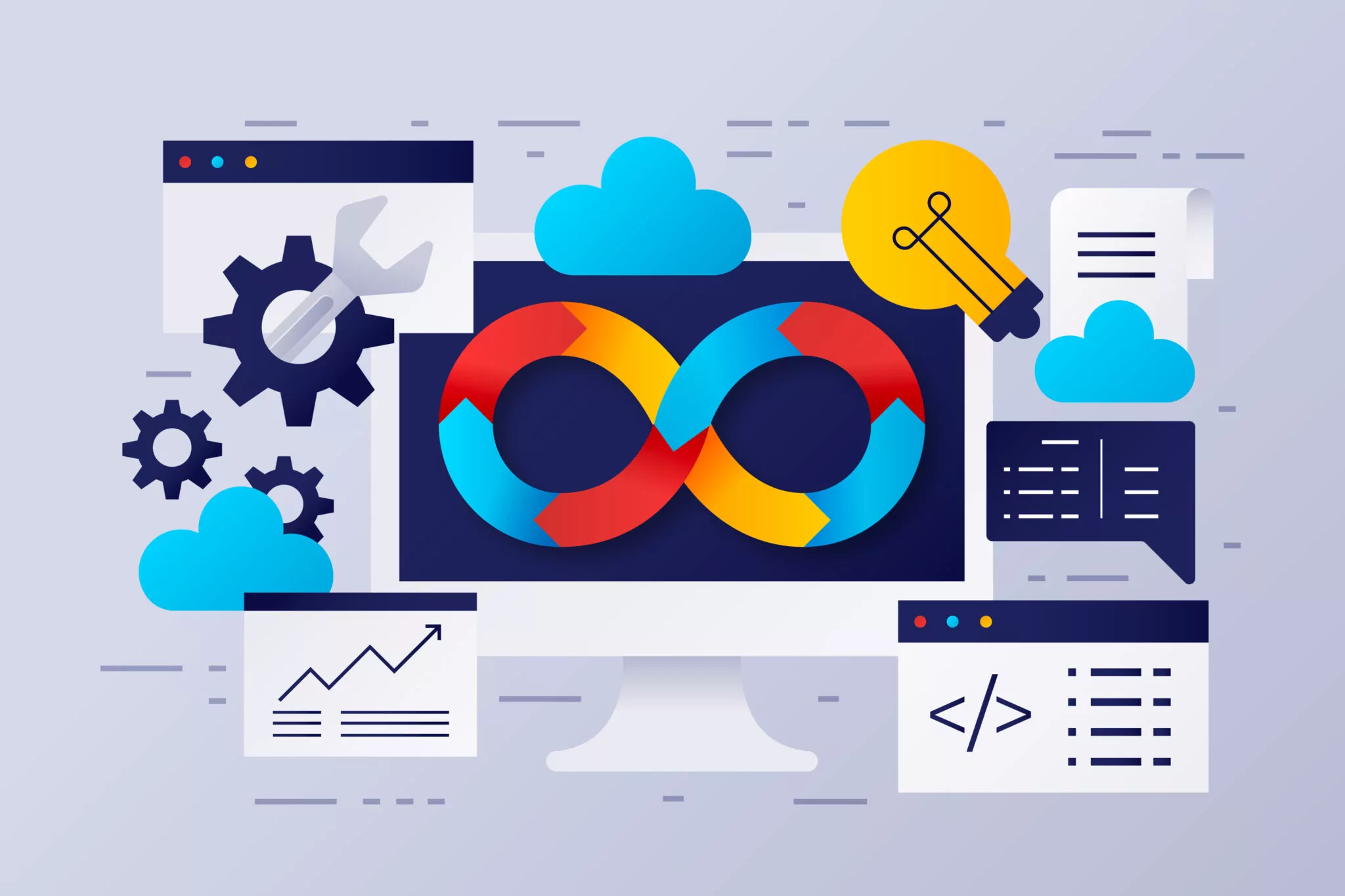Effective Change Control Process: Key Steps & Best Practices
In the fast-paced world of business, change is the only constant. Yet, it’s not always as simple as flipping a switch. That’s where the ‘change control process’ comes into play. A crucial facet of project management, it ensures that any modifications are methodically examined and implemented, minimizing potential disruptions.
Whether you’re a seasoned project manager or a curious novice, understanding this process can be a game-changer. It’s not just about managing change—it’s about harnessing its potential to drive your project to success. So, let’s dive into the fascinating world of change control process, and see how it can transform the way you navigate change in your projects.
Understanding the Change Control Process

The Definition of Change Control
Change control holds critical importance in managing project alterations. Defined typically as the systematic approach to deal with the inevitable changes a project undergoes, it prevents project derailment. It is a framework involving teams, tools, and processes that concentrate on identifying, documenting, assessing, approving or rejecting, and controlling changes to the project scope. Exceptional change control processes streamline the adaptation of alterations, ensuring the project stays on track, thereby preserving its objectives and deliverables. Pertinent changes may include, but aren’t limited to, amendments in project plans, schedules, resources, or requirements.
Why Is Change Control Important?
Change control signifies a crucial component of robust project management. It maintains the balance between the fluidity of change and the stability of project scope, guaranteeing the project’s stick-to-itiveness and efficiency. Without this process, rapid, unwarranted changes could lead, disrupting the project schedule and budget, and potentially compromising the quality of the project’s outcome.
Its significance emerges prominently in three specific areas. First, risk management, where it aids in reducing project uncertainties by controlling unregulated modifications. Second, it consolidates stakeholder alignment, where it ensures all parties understand, agree to, and are ready for the change. Lastly, the continuity of projects where it ensures that changes don’t jeopardize but align with the project’s objectives.
All in all, understanding the change control process equips project managers to handle unruly project alterations in stride, minimize disturbances, and still capitalize on the possibilities that the changes present. By cementing this understanding, project managers unwaver barriers to project success, guaranteeing optimum outcomes regardless of the changing tides they face.
Key Components of the Change Control Process

Over the course of the previous section, it’s established that the change control process plays a vital role in achieving a project’s success. Now, let’s move a step further and break down its components.
Documentation
Every change control process starts with one fundamental step – Documentation. In this phase lies the complete detailing of changes in the project. These changes include but aren’t limited to scope alterations, budget adjustments, and timeline shifts.
Documenting project changes ensures that relevant information is available for review and approval. The documentation provides a paper trail for all changes, substantiating their need and expected impact. Noteworthy examples include the Change Request Form and the Change Log. These documents harbor the proposed change, its essence, the cause, potential impacts, and other necessary details.
Approval Mechanisms
The second component strengthens the change control process – Approval Mechanisms. This step pops up, post-documentation, when the proposed changes demand assessment. Official approval of changes is what puts the official tag on them, based on their merits and demerits.
A Change Control Board (CCB), typically comprising key project stakeholders, is a fine print of this process. The board evaluates the severity of the change, checks it against the project’s objectives, and decides the change progression, based on a consensus. The board may accept, reject, or demand modifications to the proposed change.
Communication Plan
The integral component in the change control process is an effective Communication Plan. This part ensures that all individuals within the team hare privy to the changes, their implications, and the updated roles and responsibilities.
Once a change is approved, it needs broadcast to all stakeholders. The information conveyed includes the nature of the change, its implications, and any shift in roles and responsibilities. The communication ensures everyone is synchronized with the updated project plan, thereby eliminating potential misunderstandings and hiccups. For instance, project team meetings, email notifications, or project management software updates can be utilized to disseminate the information.
Change Control in Project Management

With a clear understanding of the importance and components of the change control process at our disposal, let’s delve into two pivotal sub-processes: Incorporating Change Requests and Balancing Scope and Timelines.
Incorporating Change Requests
Incorporating change requests marks a critical juncture in the change control process. A change request starts as an idea or suggestion. This suggestion undergoes scrutiny under the Approval Mechanisms we’ve previously discussed. Upon approval, integration of this request into the project becomes our next foremost concern.
A helpful process to facilitate this incorporation involves updating the relevant project documents, methodologies, and processes. For instance, an approved change request relating to project scope requires alterations in scope documents and project plans and may require revision in team roles and responsibilities. The process doesn’t stop there, though. After updating the necessary elements, diffusion of this information through the effective Communication Plan is mandatory. This plan ensures dissemination of information about the integrated changes, their impacts, and any related new responsibilities to all team members, enhancing project interaction and minimizing discrepancies.
Consider a real-life example: Google’s transition from desktop-first to mobile-first indexing in 2016. This change, initially a well-suggested request, needed careful integration into Google’s already complex algorithm—an integration that Google seamlessly achieved through documentation and communication strategies.
Balancing Scope and Timelines
Balancing scope and timelines often poses a daunting challenge to project managers worldwide. An approved change request, though necessary, sometimes unintentionally stretches the project scope or compresses the project timeline. My role, as a project manager, includes striking a balance between the two—a balance that preserves project deliverables’ quality within agreed timelines.
Upon receiving approved change requests, I, alongside my team, reassess project documents, resources, and constraints to identify the possible impacts of these changes on the project scope and timeline. If an equilibrium maintains, well and good. Yet, most often, approved change requests necessitate compromises either with scope enhancements or deadline extensions. Through meticulous impact analysis and diligent resource reallocation, we ensure delivering the best project outcome possible within stipulated constraints. The Mars Rover project serves as an exemplary instance of balancing scope and timelines, where NASA constantly reassessed and adjusted their timeline while ensuring to not compromise on their ambitious project scope.
Throughout the Change Control in Project Management process, I maintain a precarious equilibrium between preserving project objectives and adapting to necessary changes, ensuring that the project sails smoothly through turbulent tides of alterations and uncertainties.
Change Control in IT and Software Development

Having detailed the core elements of the change control process in the domain of project management, we now shift our focus to the realm of Information Technology (IT) and software development. The importance of change control extends well into these areas, ensuring successful project outcomes even amidst the unique challenges they present.
Version Control Systems
Understandably, Version Control Systems (VCS) play a crucial role in change control within software development. Acting as an effective repository for project artifacts, they allow team members to track and manage changes to software code. For instance, Git, a widely recognized VCS, enables developers to restore previous versions, compare changes, and even resolve conflicts between different code versions. Moreover, the VCS facilitates a collaborative environment, where multiple individuals can work on the same project simultaneously without the possibility of overwriting each other’s changes.
Automation of Change Control
Venturing ahead, automation offers immense potential in heightening the efficiency and accuracy of the change control process within IT and software development. Companies such as IBM and Microsoft provide robust tools for automating change management processes in sophisticated IT infrastructures. These tools assist in the rapid identification and implementation of necessary changes, reducing the likelihood of human error in the process. From scheduling alterations to tracking implementation and testing, automation tools streamline the process, ensuring changes cohere with existing IT infrastructure without causing disruptions. Automation in change control is not a luxury; it’s an essential strategy for rapidly evolving IT landscapes.
Challenges in Implementing a Change Control Process

Change control processes, while essential, bring about their own set of hurdles. Let’s dive into those and uncover potential solutions.
Resistance to Change
A significant challenge some organizations encounter is resistance to change. Employees and stakeholders, ingrained in their ways of working, find adapting to new processes difficult. It’s particularly tricky when people must learn new software or procedural practices. For instance, if a company introduces a new version control system like Git, teams who are familiar with another system may resist the switch. Mitigating such resistance begins with transparent communication about the reasons for the change, its benefits, and providing adequate training and support during the transition.
Ensuring Compliance and Documentation Integrity
Another issue concerns compliance and documentation integrity. With any change control process, organizations must ensure that all changes adhere to regulatory standards, internal guidelines, and best practices. For example, software development teams working within regulated industries, such as pharmaceuticals or aviation, must demonstrate that changes to software components are compliant with industry-specific regulations.
Documentation of all changes is critical to maintaining process integrity. Without accurate and detailed documentation, opportunities for miscommunication and errors increase. Tools such as IBM’s automation solutions aid in maintaining documentation integrity by automatically tracking changes and providing accessible records for auditing purposes.
Nonetheless, ensuring compliance and maintaining robust documentation stand as formidable challenges in the implementation of a change control process. Teams tackling these hurdles with coherent strategies and suitable tools are more likely to succeed in implementing an effective change control process.
Change Control Best Practices

Today, I’ll be tackling the best practices of the change control process. We’ll dive into a consistent methodology, the necessity of training and awareness, and the significance of continuous improvement.
Consistent Methodology
Adopt a methodological approach consistently, denoting each step of the change control process. This approach allows for transparency and ease of understanding. For instance, Apple’s methodologies, focusing on design and integration, demonstrate clear and comprehensive procedures for change control.
Training and Awareness
Boost the efficiency of the change control process with regular training and awareness sessions. This empowers stakeholders and project teams, providing them with the knowledge to understand and respond to changes effectively. The Incident Command System (ICS), for example, sees the use of training as an integral part of its management approach, reinforcing the need for continual learning.
Continuous Improvement
Embrace continuous improvement, measuring and assessing your change control process over time to identify areas for progression. Firms like Toyota, known for their lean manufacturing and continuous improvement efforts (Kaizen), often analyze their change control procedures for any potential upgrades. By regularly reviewing and adapting your change control process, you can ensure it remains efficient and effective.
Conclusion
We’ve journeyed through the intricate world of the change control process, discovering its pivotal role in project management, IT, and software development. We’ve seen how giants like Google, NASA, Apple, and Toyota harness its power to preserve project objectives, manage change, and align with stakeholders. We’ve also examined the key components of this process, such as Documentation, Approval Mechanisms, and Communication Plans. And we’ve delved into the challenges that come with it, offering strategies to overcome resistance and ensure compliance. Remember, a consistent methodology, continuous training, and improvement are crucial for a successful change control process. Let’s not forget the role of automation tools and Version Control Systems in making the process more efficient. So, as you venture into your projects, keep these insights in mind. After all, mastering the change control process could be your ticket to project success.
Frequently Asked Questions (Faqs)
What is the change control process in project management?
The change control process is a system of procedures in project management, aimed at systematically managing modifications in the project to preserve its objectives. It handles fluidity, aligns with risk management strategies, and ensures stakeholder agreement.
What are the key components of a change control process?
Three core elements of change control process are Documentation, Approval Mechanisms, and Communication Plans. They secure necessary approvals, keep all relevant parties informed, and provide recorded information that could be helpful for future reference.
How does Google and NASA manage change control process?
The article doesn’t provide specific details, but it mentions that Google and NASA rely on a comprehensive change control process to manage projects. This involves a systematic approach, potentially involving detailed documentation, standardized approval mechanisms, and robust communication plans.
Are Version Control Systems (VCS) important in change control process?
Yes, particularly within IT and software development. Tools like ‘Git’ provide a structured way of managing changes in the project’s codebase, helping to increase efficiency and reduce risks associated with changes.
How are automation tools from IBM and Microsoft used in change control process?
While specific uses aren’t detailed in the article, automation tools from companies like IBM and Microsoft are mentioned. These tools likely help in managing the change control process, making it more efficient and less prone to human error.
What are some best practices for change control process?
The article highlights a consistent methodology, training and awareness sessions, and continuous improvement as best practices. These allow teams to adapt to changes while maintaining efficiency and achieving project objectives.
How does Apple and Incident Command System (ICS) manage change control process?
While the specific techniques used by Apple and ICS are not detailed, the article suggests they employ the best practices of change control processes. Such practices likely include a consistent methodology, comprehensive training, and a commitment to continuous improvement.
What are the challenges in implementing the change control process and how can they be mitigated?
The prime challenges are resistance to change and ensuring compliance. These can be mitigated through transparent communication and by utilizing automation tools for documentation. This will ensure that everyone understands and sticks to the change control process.

Leave a Reply